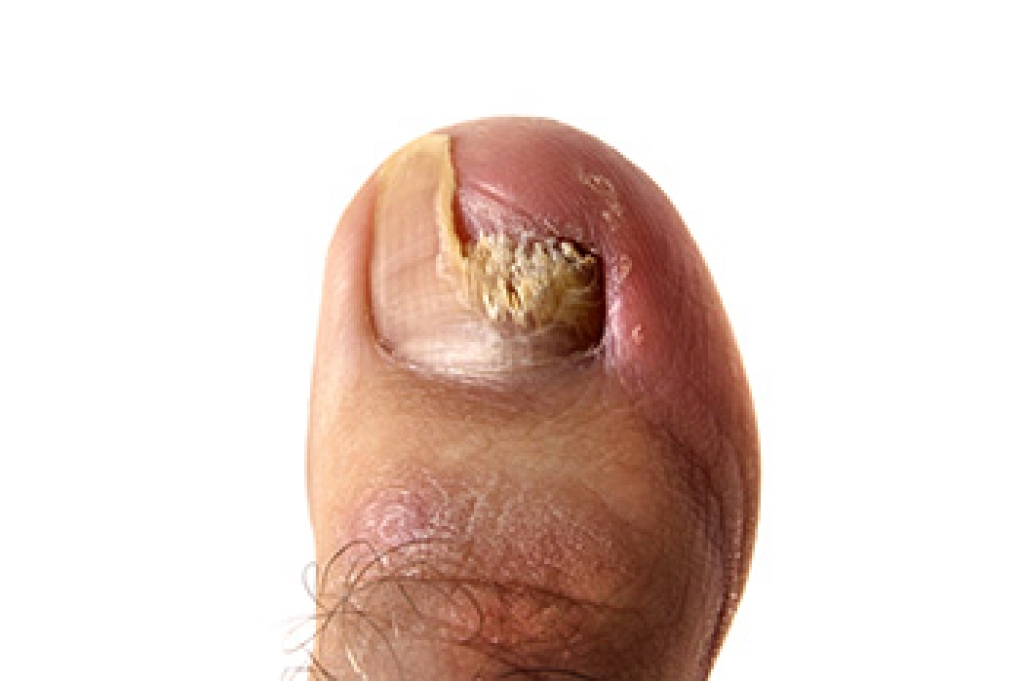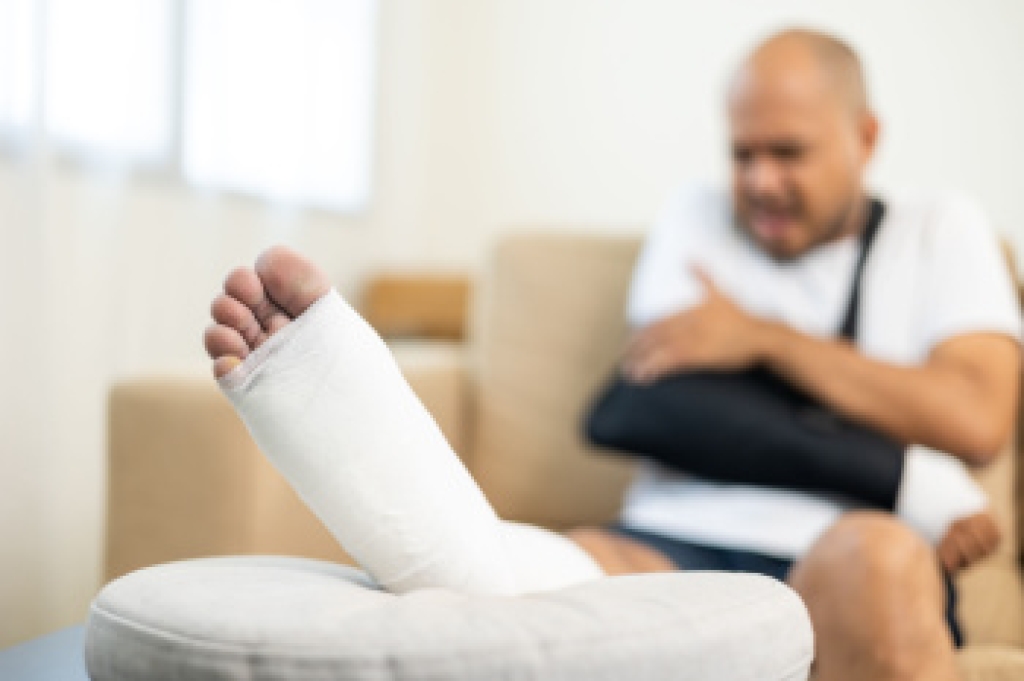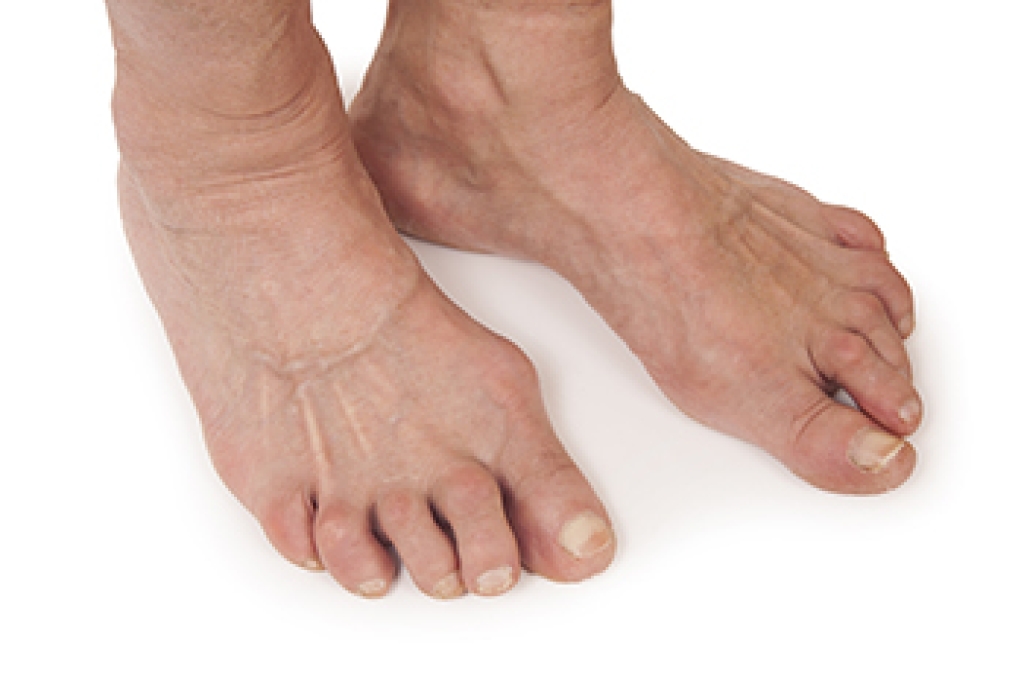Connect With Us
Blog
Blog
Managing Fungal Infections

Toenail fungus is a common condition caused by fungal organisms that thrive in warm, damp environments, such as shoes, locker rooms, and public showers. It often begins as a small discoloration and may look yellow, white, or brown, with nails becoming thick, brittle, crumbly, or distorted, over time. Some people notice an unpleasant odor or debris under the nail. Toenail fungus may feel uncomfortable, sensitive, or painful, especially when pressure is applied from footwear, although it can also be painful in early stages. A podiatrist can help from the start by examining the nails, confirming the diagnosis through testing when needed, and ruling out other nail disorders. Treatment options may include topical medications, professional nail care, and guidance on foot hygiene to prevent recurrence. Early treatment can improve nail appearance and comfort while limiting spread. If you have symptoms of toenail fungus, it is suggested that you schedule an appointment with a podiatrist for appropriate treatment solutions.
If left untreated, toenail fungus may spread to other toenails, skin, or even fingernails. If you suspect you have toenail fungus it is important to seek treatment right away. For more information about treatment, contact Alice Kim, DPM of 101 Foot and Ankle. Our doctor can provide the care you need to keep you pain-free and on your feet.
Symptoms
- Warped or oddly shaped nails
- Yellowish nails
- Loose/separated nail
- Buildup of bits and pieces of nail fragments under the nail
- Brittle, broken, thickened nail
Treatment
If self-care strategies and over-the-counter medications does not help your fungus, your podiatrist may give you a prescription drug instead. Even if you find relief from your toenail fungus symptoms, you may experience a repeat infection in the future.
Prevention
In order to prevent getting toenail fungus in the future, you should always make sure to wash your feet with soap and water. After washing, it is important to dry your feet thoroughly especially in between the toes. When trimming your toenails, be sure to trim straight across instead of in a rounded shape. It is crucial not to cover up discolored nails with nail polish because that will prevent your nail from being able to “breathe”.
In some cases, surgical procedure may be needed to remove the toenail fungus. Consult with your podiatrist about the best treatment options for your case of toenail fungus.
If you have any questions please contact our office located in Camarillo, CA . We offer the newest diagnostic and treatment technologies for all your foot and ankle needs.
Differences Between a Broken Foot and a Sprained Foot

A broken foot involves a crack or complete break in one or more of the bones, usually caused by a fall, a heavy impact, or repetitive stress on the foot. Pain from a fracture is often sharp and constant, and swelling or bruising may appear quickly. In some cases, the foot may look deformed, and putting weight on it can be extremely painful. A sprained foot, however, affects the ligaments that hold the bones together and occurs when the foot twists or turns awkwardly. Sprains often cause tenderness and mild to moderate swelling but without bone displacement. Because both injuries can cause similar discomfort, it is difficult to know which has occurred without proper testing. A podiatrist can evaluate the injury, order imaging studies, and provide the appropriate treatment to promote full recovery. If you have seriously injured your foot, it is suggested that you schedule an appointment with a podiatrist for a diagnosis and appropriate treatment.
A broken foot requires immediate medical attention and treatment. If you need your feet checked, contact Alice Kim, DPM from 101 Foot and Ankle. Our doctor can provide the care you need to keep you pain-free and on your feet.
Broken Foot Causes, Symptoms, and Treatment
A broken foot is caused by one of the bones in the foot typically breaking when bended, crushed, or stretched beyond its natural capabilities. Usually the location of the fracture indicates how the break occurred, whether it was through an object, fall, or any other type of injury.
Common Symptoms of Broken Feet:
- Bruising
- Pain
- Redness
- Swelling
- Blue in color
- Numbness
- Cold
- Misshapen
- Cuts
- Deformities
Those that suspect they have a broken foot shoot seek urgent medical attention where a medical professional could diagnose the severity.
Treatment for broken bones varies depending on the cause, severity and location. Some will require the use of splints, casts or crutches while others could even involve surgery to repair the broken bones. Personal care includes the use of ice and keeping the foot stabilized and elevated.
If you have any questions, please feel free to contact our office located in Camarillo, CA . We offer the newest diagnostic and treatment technologies for all your foot care needs.
Identification and Healing of Plantar Warts

A plantar wart is a small growth on the bottom of the foot caused by the human papillomavirus, or HPV. These warts can be painful when pressure is applied and may have a rough, grainy surface. Signs that a plantar wart is healing include the disappearance of the lump, absence of black dots, and reduced or no pain while walking or standing. Proper evaluation is essential, as warts can resemble other foot conditions. A podiatrist can provide effective treatments such as topical medications, cryotherapy, other targeted therapies, or minor surgical removal to eliminate the wart and prevent recurrence. Early intervention ensures faster recovery, protects surrounding tissue, and reduces discomfort. If you have developed a plantar wart, it is suggested that you consult a podiatrist who can offer effective treatment solutions.
Plantar warts can be very uncomfortable. If you need your feet checked, contact Alice Kim, DPM from 101 Foot and Ankle. Our doctor will assist you with all of your foot and ankle needs.
About Plantar Warts
Plantar warts are the result of HPV, or human papillomavirus, getting into open wounds on the feet. They are mostly found on the heels or balls of the feet.
While plantar warts are generally harmless, those experiencing excessive pain or those suffering from diabetes or a compromised immune system require immediate medical care. Plantar warts are easily diagnosed, usually through scraping off a bit of rough skin or by getting a biopsy.
Symptoms
- Lesions on the bottom of your feet, usually rough and grainy
- Hard or thick callused spots
- Wart seeds, which are small clotted blood vessels that look like little black spots
- Pain, discomfort, or tenderness of your feet when walking or standing
Treatment
- Freezing
- Electric tool removal
- Laser Treatment
- Topical Creams (prescription only)
- Over-the-counter medications
To help prevent developing plantar warts, avoid walking barefoot over abrasive surfaces that can cause cuts or wounds for HPV to get into. Avoiding direct contact with other warts, as well as not picking or rubbing existing warts, can help prevent the further spread of plantar warts. However, if you think you have developed plantar warts, speak to your podiatrist. He or she can diagnose the warts on your feet and recommend the appropriate treatment options.
If you have any questions, please feel free to contact our office located in Camarillo, CA . We offer the newest diagnostic and treatment technologies for all your foot care needs.
Rheumatoid Arthritis and Foot Health

Rheumatoid arthritis is a chronic autoimmune condition that causes inflammation in the joints, often affecting the feet and ankles. The immune system mistakenly attacks joint tissue, leading to symptoms such as persistent joint pain, swelling, warmth, and stiffness, particularly in the morning or after periods of inactivity. Over time, these symptoms can interfere with walking, balance, and overall mobility. A podiatrist plays a vital role in managing the effects of rheumatoid arthritis on the feet by evaluating joint health, recommending supportive footwear or custom orthotics, providing treatments to reduce pain and inflammation, and guiding exercises to maintain flexibility and strength. If you have persistent joint discomfort or walking becomes difficult, it is suggested that you consult a podiatrist who can offer effective relief and management tips.
Because RA affects more than just your joints, including the joints in your feet and ankles, it is important to seek early diagnosis from your podiatrist if you feel like the pain in your feet might be caused by RA. For more information, contact Alice Kim, DPM of 101 Foot and Ankle. Our doctor will assist you with all of your podiatric concerns.
What Is Rheumatoid Arthritis?
Rheumatoid Arthritis (RA) is an autoimmune disorder in which the body’s own immune system attacks the membranes surrounding the joints. Inflammation of the lining and eventually the destruction of the joint’s cartilage and bone occur, causing severe pain and immobility.
Rheumatoid Arthritis of the Feet
Although RA usually attacks multiple bones and joints throughout the entire body, almost 90 percent of cases result in pain in the foot or ankle area.
Symptoms
- Swelling and pain in the feet
- Stiffness in the feet
- Pain on the ball or sole of feet
- Joint shift and deformation
Diagnosis
Quick diagnosis of RA in the feet is important so that the podiatrist can treat the area effectively. Your doctor will ask you about your medical history, occupation, and lifestyle to determine the origin of the condition. Rheumatoid Factor tests help to determine if someone is affected by the disease.
If you have any questions, please feel free to contact our office located in Camarillo, CA . We offer the newest diagnostic and treatment technologies for all your foot care needs.
Blog Archives
- 2026
- 2025
- 2024

